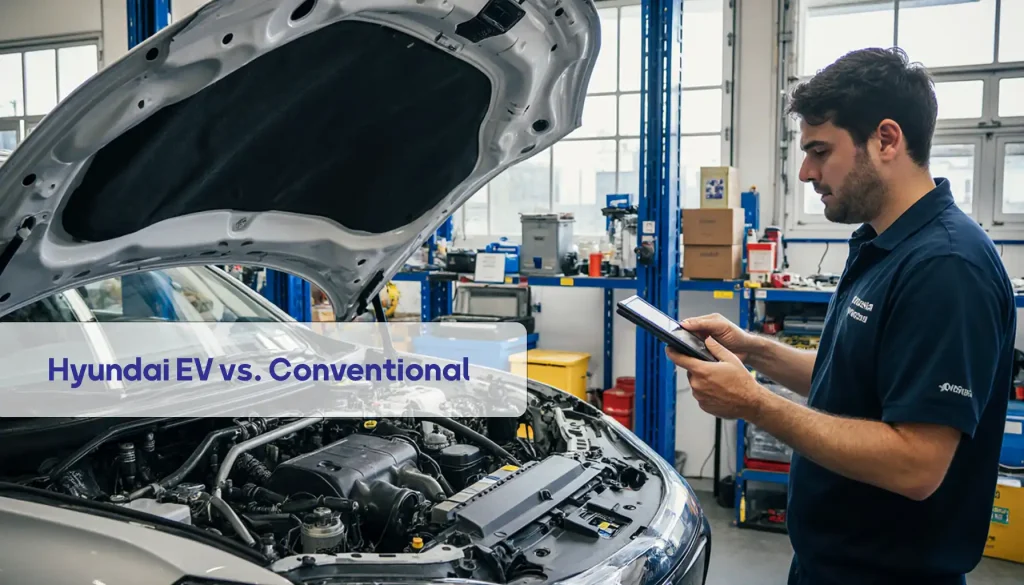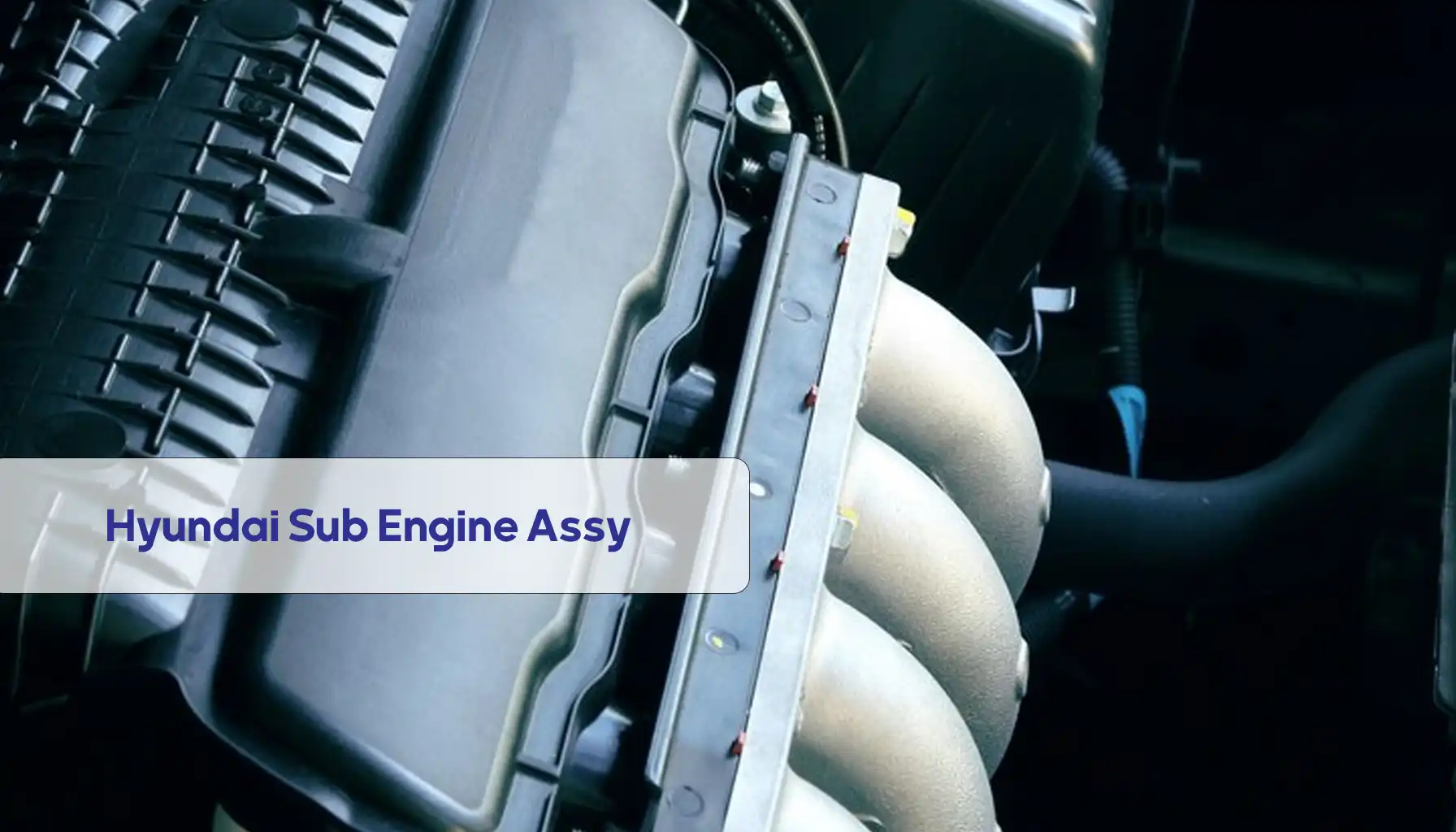The car business is at a crossroads with electric vehicles rapidly siphoning off market share from their internal combustion cousins. Hyundai Motor Company has been one of the more aggressive of the older-line automakers at making the transition, with enticing choices in both powertrain technologies. So the company is striving to soon capture global markets for electric vehicle sales, and we may soon witness a greater presence of Hyundai EVs in Dubai, the United Arab Emirates, and other countries around the world.
This in-depth examination evaluates each and every significant aspect that buyers need to balance in deciding between Hyundai EVs and their conventional gasoline-powered counterparts. Recent market statistics reveal some intriguing trends in the adoption patterns of consumers.
While EVs constituted merely 2% of the global sales of cars in 2018, the same trend had reached 14% in 2023 and is estimated to be at 30% penetration by 2030 and Hyundai’s shrewd investment in EV technology has kept it battle-ready with pure electric manufacturers, but there are questions as to whether their electric vehicles can well replace the conventional ones for all purposes.
Need top-notch Hyundai spare parts? Get the finest-quality spare parts in Dubai, from timing belts to brake discs, all certified quality and warranted. Need EV spare parts such as for the Ioniq 5 or original model spare parts such as for the Sonata? We offer genuine and compatible spare parts. Get fast UAE delivery and expert support for all your automobile needs. Get your car to the next level with top-of-the-line Hyundai spare parts in Dubai!
Mechanical Architecture: Fundamentals of Design Philosophies
The division between these car types begins at their most basic mechanical principles. The conventional Hyundai offerings like best-selling Elantra compact car and Santa Fe crossover SUV use internal combustion engines that have been honed through more than a century of automobile development.
These mechanisms convert chemical energy stored in gasoline into mechanical motion through precisely coordinated explosions within cylinders, a process that involves hundreds of exactly coordinated moving components.
There is just a single moving part – the rotor – on the electric motor, which turns within a stationary stator when driven. Compared to that, Hyundai’s electric cars such as the Ioniq 5, Ioniq 6, and Kona Electric employ the highly simplified drivelines.
This slimness is achieved at a potential expense of increased reliability but also raises completely new engineering issues in the form of battery management and power electronics. The thermal management requirements differ enormously between these technologies.
Internal combustion engines must run between optimal temperatures of 90-110°C, which requires complex cooling systems including radiators, water pumps, and thermostats. Electric vehicles have even more stringent temperature requirements, with lithium-ion batteries requiring an operating range of a paltry 20-40°C, which requires highly complex liquid cooling systems that add weight and complexity.
Hyundai’s electric vehicles, like the Ioniq 5, Ioniq 6, and Kona Electric, replace complex engines with:
- Electric Motor – Fewer moving parts (no crankshaft, pistons, or valves).
- Battery Pack – Requires cooling systems but no oil changes.
- Regenerative Braking – Reduces wear on brake discs and pads
Improve the performance of your Hyundai with an authentic crankshaft from Dubai’s trustful suppliers. Whether it is an Elantra, Santa Fe, or Tucson, we offer high-quality OEM and aftermarket crankshafts that are designed to offer enduring durability and precision. Avail quick shipping, affordable rates, and experienced counseling to ensure a flawless fit. Buy Hyundai crankshaft in Dubai today and enjoy smooth driving for years to come.
Advantages of Hyundai EV:
✔ Lower Maintenance – No oil changes, fewer mechanical failures.
✔ Instant Torque & Smooth Acceleration – Electric motors deliver power more efficiently.
✔ Eco-Friendly – Zero emissions, lower carbon footprint.
Disadvantages of Hyundai EV:
✖ Battery Degradation – Over time, battery capacity decreases (though Hyundai offers long warranties).
✖ Limited Repair Network – Not all mechanics are trained in EV-specific repairs.
✖ Higher Initial Cost – EVs are still more expensive than equivalent ICE models.
Powertrain Longevity: Expected Service Life Compared
Reliability remains the most common question among potential EV buyers; Hyundai’s own internal combustion engines are very resilient in real-world usage, with many examples over 300,000 kilometers if properly maintained.
Its Theta and Nu engine families supporting cars like Sonata and Tucson have been particularly resilience if serviced to factory spec.
Electric powertrains have a very different longevity profile. The motors themselves can, theoretically, last forever with minimal wear, but the battery packs are the weak link.
Hyundai provides an 8-year/160,000 km battery capacity warranty, which assures that at least 70% of original capacity remains at warranty expiration.
Real-world experience from early Kona Electric models shows most batteries to retain around 85-90% capacity at 160,000 km with normal driving.
The pattern of degradation is linear with the maximum capacity reduction in the first 50,000 km followed by a plateau.
Battery management systems are key to achieving maximum lifespan through prevention of excessive charge levels, temperature control, and cell voltage balancing.
Hyundai’s new E-GMP platform models incorporate active thermal management systems that allow coolant to flow through channels within battery modules, a significant improvement over earlier passive air-cooled designs.

Maintenance Requirements: How Frequent and Intensive
Another of the touted advantages of electric vehicles is that they need less maintenance.
A standard Hyundai EV does away with well over two dozen normal service items that gasoline-powered cars need, such as oil changes, spark plug replacements, timing belt maintenance, and exhaust system checks.
This can be worthwhile in the long run, but the advantage of lower maintenance cost must be weighed against higher upfront purchase costs.
electric vehicles have their own unique maintenance problems:
The high-voltage equipment requires maintenance by trained technicians with specialized tools, limiting repair options to franchised dealerships in the majority of markets.
Battery coolant will eventually need replacement, and the regenerative brakes continue to utilize traditional friction brakes that ultimately need service, but less frequently due to reduced wear.
Conventional Hyundai models come with scheduled maintenance of known expenses. The 1.6L Gamma engine in the majority of subcompact cars requires oil replacement at 15,000 km under ordinary use and more frequent 7,500 km replacements under severe driving.
Transmission fluid, belt, and fuel system maintenance account for long-term cumulative maintenance over the years, though the techniques can commonly be performed by any service technician.
Performance Features: Beyond the Spec Sheet
The driving dynamics are qualitatively different between these kinds of powertrains; Hyundai’s electric vehicles deliver zero-RPM torque on demand, offering jarring acceleration that is particularly theatrical under city-driving conditions.
In this video you can explore a detailed side-by-side comparison of the 2025 Hyundai IONIQ 5 and KONA Electric, including trims, performance, range, design, and charging options. This video is perfect for anyone evaluating which EV fits their lifestyle best.
The Ioniq 5’s dual-motor configuration generates 446 lb-ft of torque at will, propelling the 2,000 kg crossover to 100 km/h in 4.5 seconds – acceleration that would require a high-strung turbocharged V6 in a traditional car.
Acceleration & Driving Experience
| Model | 0-100 km/h | Top Speed | Driving Feel |
| Hyundai Ioniq 6 N (EV) | 3.2s | 257 km/h | Instant torque, silent, “spaceship” smoothness |
| Hyundai Elantra N (ICE) | 5.3s | 250 km/h | Raw engine sound, gear shifts, “analog” thrill |
| Hyundai Santa Fe (ICE) | 8.2s | 210 km/h | Comfort-focused, higher body roll |
Yet, there are some driving purists who argue that electric vehicles don’t have the sensual engagement of internal combustion.
Those single-speed transmissions and linear power delivery, as efficient as they may be, do away with the tactile feel of rowing through gears and engine speed variation.
Hyundai has attempted to fill that gap with virtual shift points and artificial noise generation in their N performance vehicles, but the purists argue those features can’t quite replicate the mechanical symphony of a rev-friendly gasoline engine.
Ride and handling characteristics call up fascinating compromises. EVs are benefited by low center of gravity via floor-mounted batteries, which adds to cornering stability.
However, their significant weight – often 300-500 kg more than comparable combustion models – affects suspension tuning and tire wear. Hyundai’s engineers have done commendable work reducing the effects, though, with the Ioniq 5 serving up refreshingly agile handling for its weight.
Ownership Economics: Calculating Total Cost
The economic calculation contains numerous variables that vary on a driving-pattern and regional basis. In low-gas-price and high-electricity-cost markets, the operating cost advantage of EVs is significantly lower.
Areas with expensive gasoline and cheap renewable energy strongly favor electrification. Government subsidies complicate the formula since most governments offer substantial tax credits or rebates to purchase EVs.
| Model | Original Price (AED) | Resale Value (AED) | Retention Rate |
| Hyundai Tucson (ICE) | 110,000 | 75,000 | 68% |
| Hyundai Santa Fe (ICE) | 140,000 | 90,000 | 64% |
| Hyundai Kona Electric | 160,000 | 100,000 | 62% |
| Hyundai Ioniq 5 | 180,000 | 120,000 | 66% |
Depreciation patterns have declined rapidly with the market’s maturation. The first-generation electric vehicles suffered steep value drops on concerns regarding battery longevity and rapid technology obsolescence. However, existing proof suggests luxury EVs like the Ioniq 5 retaining residual values similar to their internal combustion engine equivalents, particularly in nations with highly developed charging infrastructure.
Insurance costs are another important factor. EVs tend to cost more to insure due to the high battery packs and lower body repair network. Repair costs for low-speed accidents also tend to be higher, as most EVs have body panels replaced wholesale due to structural components built into the body. Hyundai’s conventional models have developed repair methods and an abundance of spare parts.
Challenges for EV Repairs
- Limited Stock of EV-Specific Parts:
- Battery modules
- Power inverters
- High-voltage wiring
- Fewer certified technicians (vs. ICE mechanics)
While electric vehicles do not produce direct emissions on the road, environmental superiority depends absolutely on the energy source used to power the grid to generate electricity.
On coal-powered grids, the carbon footprint over the entire life cycle may be only modestly better than efficient gasoline hybrids. But as penetration of renewables continues to grow worldwide, this advantage will swell considerably.
Hyundai’s EVs use lithium-ion battery packs (e.g., 77.4 kWh in Ioniq 5, 64.8 kWh in Kona Electric). Key factors affecting battery life:
- Degradation Rate: Most Hyundai EV batteries lose 1-2% capacity per year.
- Warranty Coverage: Hyundai offers 8 years/160,000 km warranty (whichever comes first).
- Replacement Cost: A full battery replacement can cost $15,000–$30,000, but partial module repairs are often possible.
Manufacturing the batteries remains the most environmentally taxing aspect of EV production.
Lithium, cobalt, and nickel extraction are generating severe environmental and human rights problems the industry is attempting to mitigate by doing more recycling and alternative chemistries.
Hyundai has gone out of its way to source more sustainable materials and have closed-loop recycling systems for their battery packs.
Conventional cars also have their own environmental concerns beyond exhaust emissions. The entire petroleum chain – production to refining to shipment – has enormous ecological costs that are hardly factored into simplistic comparisons.
Hyundai’s new gasoline engines employ numerous technologies that minimize their environmental footprint, including particulate filters and ultra-lean combustion modes.
Market Availability and Model Selection
Hyundai’s current product mix offers different advantages for different consumer needs. Hyundai’s electrified lineup, while growing rapidly, still lacks body style diversity from their combustion counterparts.
Families who need three-row capacity must settle for the gas-powered Palisade at present, as Hyundai has not yet introduced an electric equivalent. Similarly, performance shoppers benefit from more choice among combustion N models, though the Ioniq 5 N begins to close that gap.
Greater access to charging facilities is the determining factor preventing greater adoption of EVs. Hyundai provides free charging credits and access to all significant charging networks, but for most people, it remains a long way from the ubiquitous presence of refueling stations.
Partnerships with charging providers by the company go a long way to soften this but are still required in rural geography and in multifamily living arrangements.
Future Research Perspective: Technological Convergence
The gap between these kinds of powertrains may close in the next several years as Hyundai develops next-generation technologies. The company has provided blueprints for hydrogen fuel cell vehicles that can offer electric drive with rapid refueling, potentially giving customers the best of both worlds.
Similarly, advanced synthetic fuels could make combustion engines viable in a world that goes carbon-free.
Battery technology continues to advance at breakneck speed, with solid-state batteries providing greater energy density, faster charging, and better protection.
Hyundai’s investments in such technologies show the next-generation EVs will address many of the current issues, potentially making this analysis obsolete within a decade.
The combustion engine will not vanish overnight, but its role will diminish to niche applications as electrification is ongoing.
Final Recommendations: Matching Technology to Need
For urban commuters with smooth home charging, Hyundai EVs offer real strengths in running expenses, performance, and emissions. The Ioniq 5 and 6 are great contenders in this space, offering affordable range and quick charging.
Families needing maximum interior space and towing capacity may still prefer traditional models like the Palisade until electric alternatives become available. Fleet operators must consider their particular duty cycles and charging patterns carefully before they sign on to electrification. EVs may have lower mileage costs, but that means the higher initial expense has to see enough use to provide a payoff.
Hyundai’s broad model family offers solutions across the board, from hybrids that save fuel to all-electric vehicles, so customers can choose the right technology for their individual needs.
Frequently Asked Questions: Hyundai EV vs. ICE Spare Parts & Maintenance
What are the most available spare parts for Hyundai in Dubai?
Arsin Trading stocks over 5,000+ original Hyundai spare parts for mainstream ICE models like:
- Elantra (2018–2024): Pistons, timing belts, fuel injectors
- Santa Fe (2019–2024): Turbochargers, crankshafts, brake discs
- Tucson (2021–2024): Transmission components, oil pumps
For Hyundai EV spares (Ioniq 5/6, Kona Electric), we specialize in:
- Battery cooling systems
- High-voltage cables
- Electric motor components
- Call us for real-time inventory checks.
Are Hyundai EV components more expensive than ICE components?
Yes, EV components are usually 20–40% more expensive due to:
- Specialized manufacturing (e.g., battery modules)
- Local suppliers based in Dubai are few
- Higher import duties on electric drivetrain parts
- A Hyundai Kona Electric battery cooling pump is ~AED 1,800 compared to an Elantra water pump of ~AED 600.
How long do Hyundai EV batteries last in Dubai temperatures?
Under proper maintenance:
- 8–10 yrs (160,000–200,000 km) before significant degradation
- ArsinTrading provides battery health testing and cooling system parts to maximize lifespan
- Tip: Precondition and park in the shade to reduce heat stress.
Is it possible for me to get my Hyundai EV serviced at any workshop in Dubai?
No. EVs require:
- Hyundai-trained technicians (we work with 12+ Dubai workshops)
- High-voltage system specialist equipment
- Genuine EV-specific fluids (coolant, dielectric grease)
- We supply parts to approved centers across the UAE.
Which Hyundai model is the least maintained in Dubai?
Ranked by 5-year maintenance (AED):
- Kona Electric: ~AED 6,000 (tires, cabin filters)
- Elantra (1.6L): ~AED 12,500 (oil, belts, spark plugs)
- Santa Fe (2.5L Turbo): ~AED 18,000 (more complex engine)
- Pro Tip: ICE models need to be serviced 3x more frequently than EVs.
Do you offer warranties on Hyundai EV battery parts?
Yes! Arsintrading provides:
- 12-month warranty on all Hyundai EV genuine parts
- 6-month warranty on compatible aftermarket parts
- Battery diagnosis using OEM-approved software
7. What’s the most often replaced item in Hyundai ICE versus EV?
- ICE: Timing belts (every 100,000 km), brake pads (every 50,000 km)
- EV: Cabin air filters (every 20,000 km), battery coolant (every 5 years)



